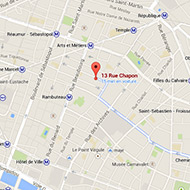The Isabelle Gounod Gallery is pleased to present ONWARD!, the new exhibition dedicated to British artist Glen BAXTER.
Born in Leeds in 1944, Glen Baxter spent his childhood between movie theaters and libraries. In the former, he indulged in Westerns with their cowboys or the transgressive and quirky slapstick of the Marx Brothers. In the latter, he learned to love words by diving into adventure books, particularly those by W.E. Johns, which tell the thrilling life of pilot James Bigglesworth.
After training at Leeds Art School, he realized that he was more drawn to poetry than to abstract painting. In the 1970s, he flew to New York at the invitation of poet Larry Fagin, who asked him to read his work at St. Mark's Church as part of the Poetry Project. This stay, along with the writing experiences he had there, would alter the course of his career.
Back in London in 1978, Glen Baxter gradually developed the formula that would make him famous: a clear-line drawing (made in ink) colored with pencil, a style reminiscent of children's books, comics, and accompanied by a short, offbeat text, creating an unexpected relationship with the scene:
"The first poems I wrote condensed themselves, a bit like legends beneath the image," he explains. "It works because there’s a fracture in the narrative. It’s as if you find a page from a book but don’t know which book it belongs to. So you ask yourself: what’s going on here? It’s that collision, that moment of explosive thought (...) I want people looking at my work to ask themselves 'What’s funny about this?' And either you get it, or you don’t."*
Strongly influenced by surrealism and Dadaism, Glen Baxter borrows a clear taste for nonsense* and irony, playing with incongruous associations and delightful contrasts between text and image. A deceptively naïve world where the absurdity of each situation forces us to examine our own perception of the world.
Explorers in colonial helmets, students in blazers, tea drinkers, cricket players, cowboys, and other scouts are the everyday heroes of his captioned drawings, which made him famous. Derived from popular stories of the 1930s and 40s, these characters are placed in absurd and extravagant situations in which they seem to maintain a distinctly British calm: boy scouts reciting Raymond Roussel in front of a campfire; a sheriff catches cowboy Perec in the act of stealing an "E"; a cowboy galloping at full speed scatters pages from In Search of Lost Time, discovering a quick read of Proust; children in bathrobes examine their father's almost-industrial reproduction of Mondrian by lantern light...
Glen Baxter’s works explore themes of modern art, literature, French gastronomy, and English traditions. This master of nonsense knows exactly where to place the detail that the eye only notices at a second glance. These slight distortions of reality create unexpected ruptures in meaning:
"The surrealists called it the 'shiver', that sudden feeling that the ground is slipping away... It’s a fleeting sensation, but very strong, as if the mind momentarily loses its balance. Exactly what I try to make those who look at my drawings feel. I’ve always loved these ruptures in reality, these slight vertigoes."**
Glen Baxter is quick to cite influences: Lewis Carroll, the novel What a Life!, considered by Raymond Queneau as a pioneer of surrealism, Buffalo Bill, Tom Mix, George Herriman (creator of Krazy Kat), and those he admires most: Jarry, Queneau, Raymond Roussel, Beckett, Magritte, Chirico, Desnos, Man Ray...
_________________________________________________________________________
* Glen Baxter. Revenge of the Stammerer by Liv Siddall, 2020 (full article available on WePresent: https://wepresent.wetransfer.com/story/glen-baxter/)
** Stéphane Jarno, "Les dadas du Colonel", Télérama no. 3077, 2009
*** E.V. Lucas, George Morrow, What a Life!: an Autobiography, 1911, London, Methuen & Co Ltd


